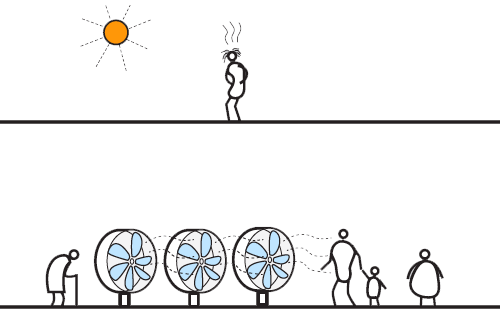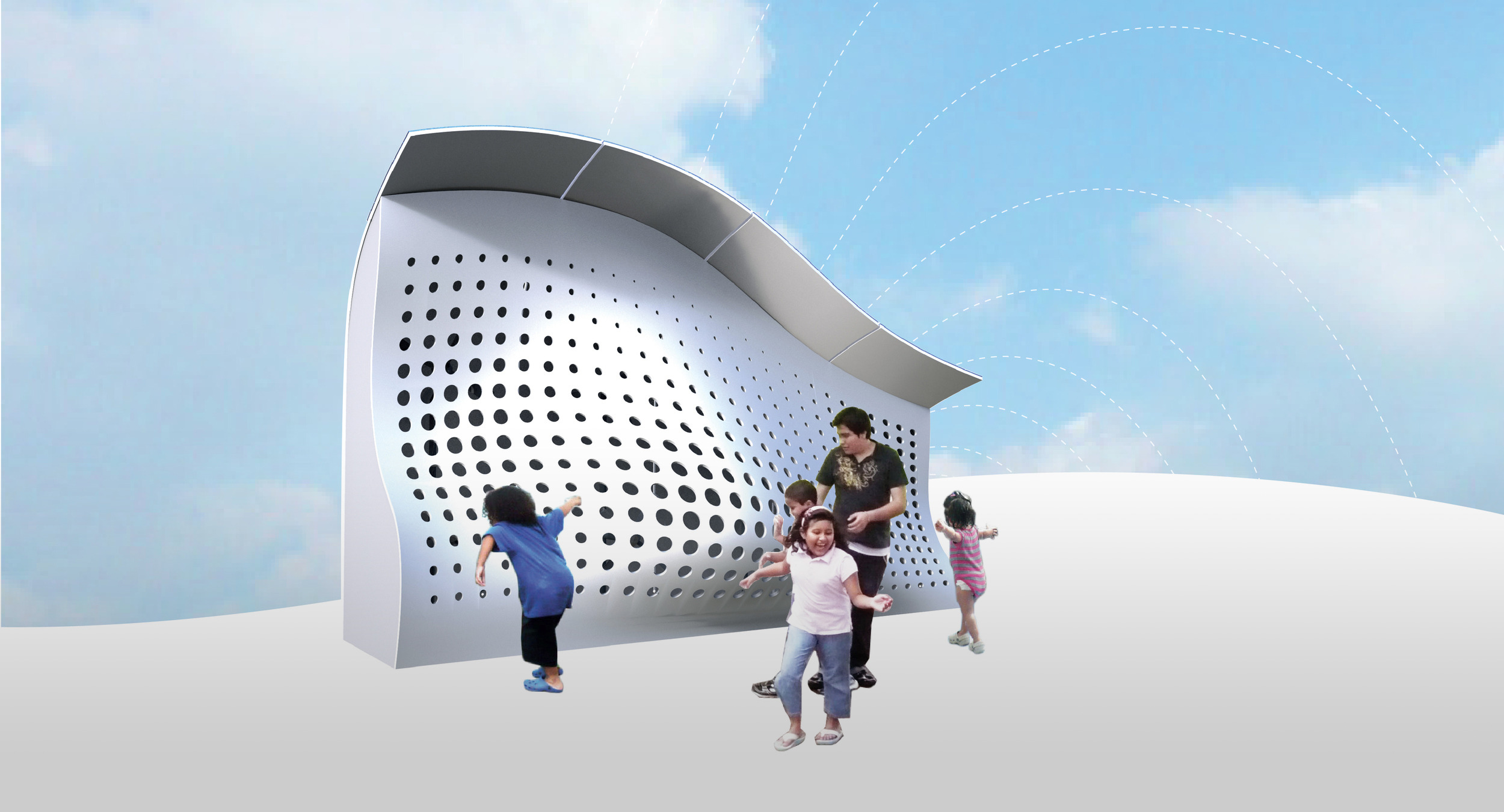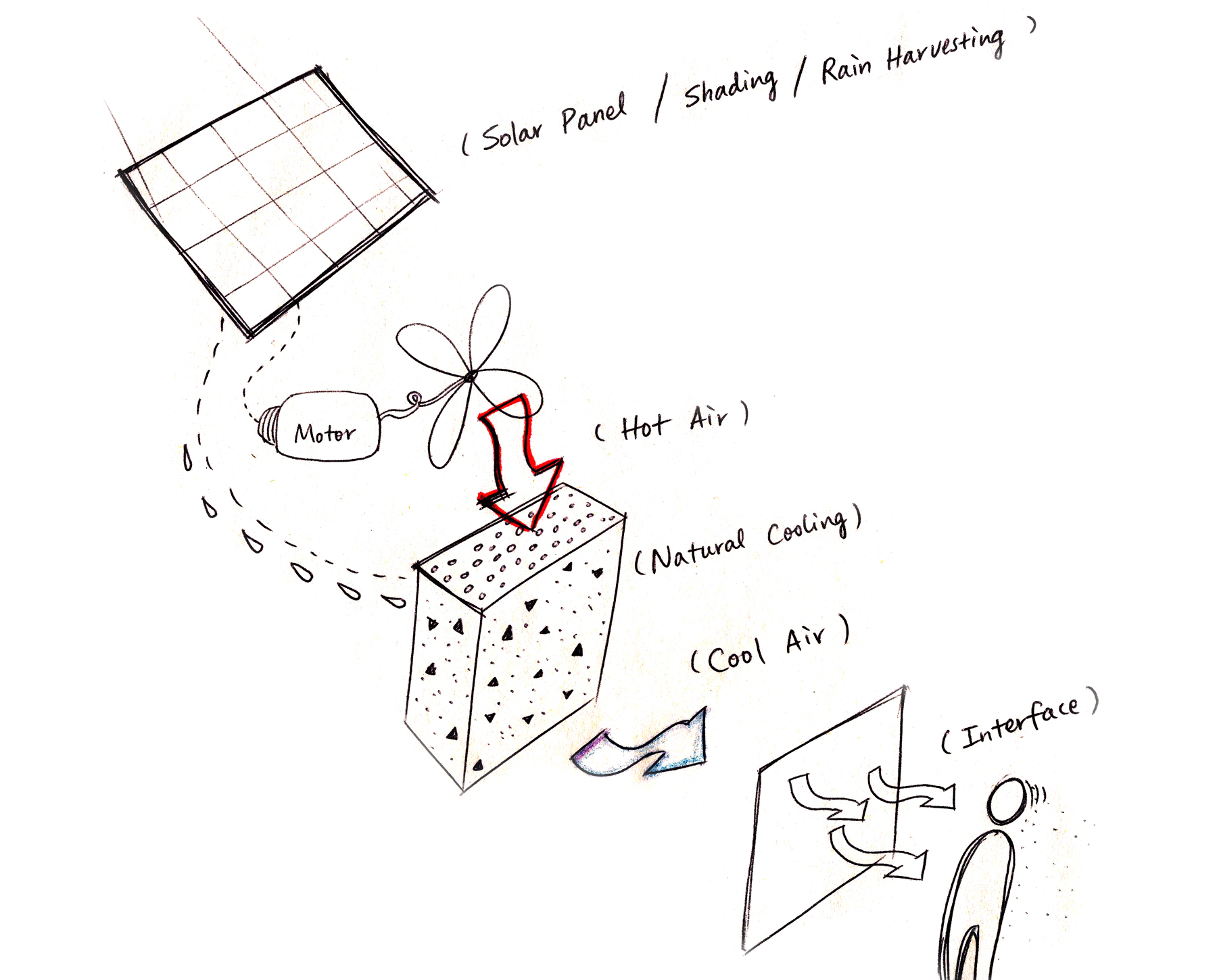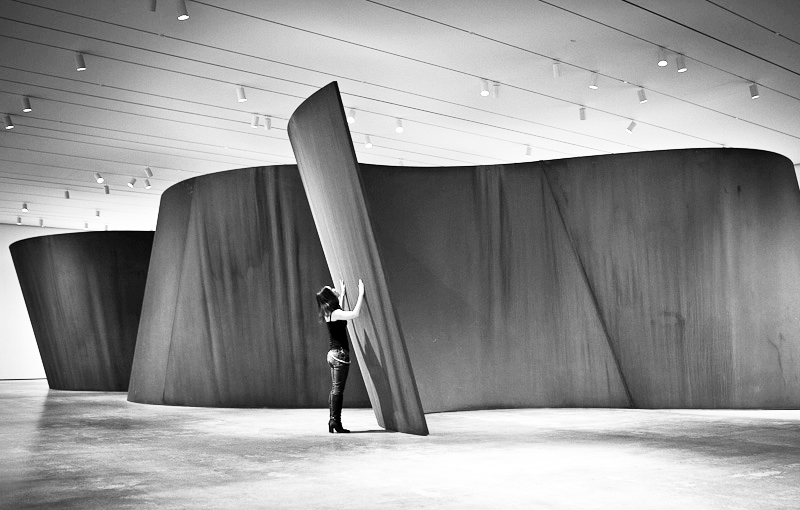Design
The system is largely self-reliant in energy consumption. It uses solar energy collected from the solar panel to power the machineries. And it uses water mist as a natural cooling agent. The mechanisms were encased in a sculptural interface that's natural for public interaction.
I wanted to design a "place", where people go for both cooling and social gathering. I explored different forms (seat, pipe, chamber, etc.) After many iterations, I decided on a wind surface, which seemed most inclusive and economic to build.
In order to save energy, the fans use motion sensors, and only turn on when people approach them.














